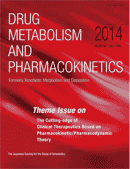
Drug Metabolism and Pharmacokinetics
Scope & Guideline
Illuminating the Dynamics of Drug Action and Disposition
Introduction
Aims and Scopes
- Drug Metabolism Mechanisms:
Research on the biochemical processes by which drugs are metabolized in the body, including studies on cytochrome P450 enzymes and other metabolic pathways. - Pharmacokinetic Modeling:
Development and application of mathematical models to predict the absorption, distribution, metabolism, and excretion (ADME) of drugs, particularly through physiologically based pharmacokinetic (PBPK) models. - Drug-Drug Interactions:
Investigation of how different drugs affect each other's pharmacokinetics and pharmacodynamics, including the role of transporters and metabolic enzymes. - Population Pharmacokinetics:
Analysis of how drug pharmacokinetics vary among different populations, including genetic factors and ethnic differences. - In Vitro and In Vivo Studies:
Utilization of various experimental models, including animal models and human-derived systems, to study drug metabolism and pharmacokinetics. - Emerging Technologies in Drug Development:
Exploration of innovative methodologies such as machine learning, high-throughput screening, and organ-on-a-chip technologies to enhance drug development processes.
Trending and Emerging
- Physiologically Based Pharmacokinetic Modeling (PBPK):
An increasing trend towards using PBPK modeling to predict drug behavior and interactions in humans, highlighting its importance in regulatory submissions and personalized medicine. - Machine Learning Applications:
Growing integration of machine learning techniques in pharmacokinetic modeling and drug discovery, enhancing the ability to predict drug metabolism and interactions. - Microbiome Influence on Drug Metabolism:
Emerging research on the role of gut microbiota in drug metabolism and pharmacokinetics, recognizing the significant impact of the microbiome on drug efficacy and safety. - 3D Cell Culture Models:
Increased use of advanced in vitro models, such as 3D cultures and organoids, for more accurate predictions of human drug metabolism and toxicity. - Biomarker Identification for Drug Response:
A trend towards identifying biomarkers that can predict individual responses to drugs, which is vital for the implementation of precision medicine. - Focus on Rare Genetic Variants:
An emerging emphasis on studying rare genetic variants in drug metabolism, recognizing their potential impact on drug efficacy and safety, particularly in diverse populations.
Declining or Waning
- Traditional Drug Interaction Studies:
Research focused solely on traditional in vitro drug-drug interaction studies has been declining, as newer methodologies and models are developed that offer more predictive power. - Animal Models in Drug Metabolism:
There is a noticeable reduction in studies relying solely on animal models for drug metabolism research, with a shift towards more human-relevant in vitro systems and organoid models. - Single Enzyme Studies:
Investigations that focus on single enzyme activities without considering broader metabolic contexts and pathways are becoming less frequent, as there is a growing recognition of the complexity of drug metabolism. - Generalized Pharmacogenomics:
Research that does not take into account specific genetic variations in diverse populations is waning, as more studies emphasize personalized medicine and population-specific pharmacogenomics.
Similar Journals

Advances in Pharmacological and Pharmaceutical Sciences
Unlocking the Future of Therapeutic Practices.Advances in Pharmacological and Pharmaceutical Sciences is a premier open-access journal published by Hindawi Ltd. based in the United Kingdom. Established in 2020, the journal swiftly garnered attention for its commitment to disseminating high-quality research in the realms of pharmacology, toxicology, and pharmaceutical sciences. It holds a commendable impact with notable quartile rankings, including Q2 in both Organic Chemistry and Pharmacology, indicating its importance within these disciplines. By embracing an open-access model, the journal ensures that research findings are widely available, promoting increased visibility and collaboration among researchers, professionals, and students globally. With an ongoing convergence of insights projected through 2024, Advances in Pharmacological and Pharmaceutical Sciences aims to address critical issues and advancements in drug development and therapeutic practices, making it an invaluable resource for those at the forefront of scientific inquiry in pharmacology and related fields.
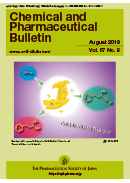
CHEMICAL & PHARMACEUTICAL BULLETIN
Innovating the future of medicine through research and insights.CHEMICAL & PHARMACEUTICAL BULLETIN, published by the Pharmaceutical Society of Japan, has been a cornerstone in the fields of chemistry, drug discovery, and medicine since its inception in 1958. With an ISSN of 0009-2363, this esteemed journal offers a platform for the dissemination of innovative research and critical insights contributing to these dynamic disciplines. Housed in Tokyo, Japan, it is strategically poised to bridge the gap between chemical sciences and pharmaceutical applications. Although the journal operates under a traditional subscription model and does not currently offer open access, it maintains a solid reputation, evidenced by its Q3 category rankings in multiple relevant fields and its percentile positions in Scopus, specifically 48th in General Chemistry and 30th in Drug Discovery. Researchers, professionals, and students alike will find invaluable resources within its pages, as it diligently covers shifting paradigms and emerging methodologies critical to advancing both theoretical understanding and practical applications in the pharmaceutical realm.
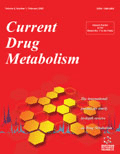
CURRENT DRUG METABOLISM
Bridging Discovery and Application in Drug MetabolismCURRENT DRUG METABOLISM, published by Bentham Science Publishers Ltd, serves as a pivotal resource in the fields of Clinical Biochemistry and Pharmacology. With an ISSN of 1389-2002 and an E-ISSN of 1875-5453, this journal has carved a niche since its inception in 2000, offering in-depth research and reviews that bridge the gap between drug metabolism and its clinical applications. The journal finds itself positioned in the third quartile (Q3) for both Clinical Biochemistry and Pharmacology as of 2023, reflecting its significance within these scientific sectors, with Scopus rankings showcasing its role in advancing knowledge—rank #167 in Pharmacology and #66 in Clinical Biochemistry. Researchers and industry professionals are encouraged to contribute their findings, fostering a diverse platform that informs and inspires innovations in drug development and safety. While CURRENT DRUG METABOLISM operates under a traditional subscription model without open access, its rigorous peer-review process ensures the quality and integrity of the published work, making it indispensable for anyone engaged in drug research and biochemistry.
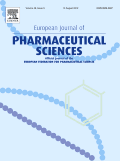
EUROPEAN JOURNAL OF PHARMACEUTICAL SCIENCES
Driving Excellence in Pharmaceutical Research and EducationThe European Journal of Pharmaceutical Sciences is a prestigious academic journal dedicated to advancing the field of pharmaceutical science. Published by Elsevier, the journal boasts an impressive impact factor and is categorized in the Q1 quartile for pharmaceutical science as of 2023, signifying its influence and reputation within the academic community. With a Scopus ranking of #20 out of 183 in the fields of pharmacology, toxicology, and pharmaceutics, the journal provides a vital platform for researchers and practitioners to disseminate innovative studies and groundbreaking research that push the boundaries of drug development and delivery. Based in the Netherlands and operating since 1993, the journal seeks to cover a broad scope of topics related to pharmaceutical sciences, encouraging rigorous evaluations and discussions that enhance the understanding and application of this critical field. The absence of open access underscores the commitment to maintaining high scholarly standards, while still offering avenues for libraries and institutions to provide access to cutting-edge research. As the journal converges towards its 2024 milestones, it continuously aims to foster a vibrant exchange of knowledge among its diverse readership, comprising committed researchers, professionals, and students.
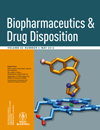
BIOPHARMACEUTICS & DRUG DISPOSITION
Pioneering Research in Pharmaceutical SciencesBIOPHARMACEUTICS & DRUG DISPOSITION, published by WILEY, is a prominent journal in the fields of biopharmaceutics and pharmacology, dedicated to the dissemination of vital research that spans from the foundational aspects of drug disposition to advanced therapeutic developments. Since its inception in 1979, this journal has established itself as a crucial resource for a diverse audience, including researchers, professionals, and students. With its impact factor indicating solid performance and a current ranking in Q2 for Pharmaceutical Science and Q3 across miscellaneous medicine categories, BIOPHARMACEUTICS & DRUG DISPOSITION serves as a nexus for innovative studies and breakthrough findings. The journal's comprehensive scope ensures that rigorous scientific inquiry is represented, helping to advance the understanding of drug behavior in biological systems. Participating in this scholarly dialogue not only enhances individual knowledge but contributes to the broader pharmaceutical and medical communities, making it an essential publication for all stakeholders interested in drug development and utilization.

Clinical Pharmacology in Drug Development
Empowering professionals with cutting-edge pharmacological insights.Clinical Pharmacology in Drug Development, published by WILEY, is a distinguished journal dedicated to advancing the field of pharmaceutical science and drug development. With a strong commitment to disseminating cutting-edge research, this journal serves as a crucial platform for professionals, researchers, and students aiming to enhance their understanding of pharmacological principles and innovations in medical therapeutics. Since its inception in 2012, the journal has consistently maintained a noteworthy presence in the academic community, currently achieving a Q2 ranking in both Pharmaceutical Science and Medical Pharmacology categories as of 2023. Although the journal operates under a subscription model, it is highly regarded for its rigorous peer-reviewed publications, offering insights into drug efficacy, safety, and regulatory challenges. Positioned at the intersection of clinical practices and pharmaceutical advancements, Clinical Pharmacology in Drug Development plays an essential role in bridging the gap between scientific research and real-world application, ensuring that the latest therapeutic strategies are optimized for patient care.

AAPS Journal
Innovating Solutions for Tomorrow's Pharmacology Challenges.AAPS Journal, published by Springer in the United States, is a leading peer-reviewed journal dedicated to the advancement of research in the field of Pharmaceutical Sciences. With an impressive Q1 rank in its category and a position within the 81st percentile of Scopus rankings, it serves as a vital resource for researchers and professionals seeking to disseminate impactful findings and innovative methodologies. The journal publishes high-quality original research, review articles, and technical reports aimed at addressing the multifaceted challenges in pharmacology, toxicology, and pharmaceutics. Operating under an Open Access model, AAPS Journal ensures broad dissemination of knowledge, contributing to the enhanced visibility and accessibility of research outputs. With a publication window spanning from 1999 to 2024, it continues to shape the future of pharmaceutical research and its applications. Researchers, students, and industry professionals will find a valuable repository of cutting-edge knowledge in this esteemed journal.

CLINICAL PHARMACOKINETICS
Championing Innovations in Drug Delivery and MetabolismCLINICAL PHARMACOKINETICS, published by ADIS INT LTD, is a premier journal dedicated to the field of pharmacology, with a distinguished reputation since its inception in 1976. With an impressive impact factor and categorized in the Q1 quartile for both general pharmacology and medical pharmacology, this journal ranks #29 out of 272 and #53 out of 313 in its respective categories in Scopus, highlighting its high academic influence and the quality of research it publishes. CLINICAL PHARMACOKINETICS serves as a vital resource for researchers, professionals, and students interested in the latest advancements in drug metabolism, therapeutic efficacy, and clinical applications of pharmacokinetic studies. As it continues to evolve through 2024 and beyond, the journal remains committed to fostering a deeper understanding of pharmacotherapy and its implications in clinical practice. While it does not currently offer open access, the journal ensures that cutting-edge research is accessible through various academic platforms.

ASSAY AND DRUG DEVELOPMENT TECHNOLOGIES
Unveiling New Horizons in Pharmacology and Drug DevelopmentASSAY AND DRUG DEVELOPMENT TECHNOLOGIES is a peer-reviewed journal published by Mary Ann Liebert, Inc., focused on the innovative fields of pharmacology and drug development. With its ISSN 1540-658X and E-ISSN 1557-8127, the journal has successfully contributed to the scientific community since its inception in 2002, converging into one comprehensive resource by 2024. Positioned in the Q3 quartile for Drug Discovery and Q4 for Molecular Medicine as per the 2023 rankings, the journal is dedicated to disseminating cutting-edge research that addresses the complexities of drug assay techniques and their implications in therapeutics. Although currently not an open-access publication, it offers significant insights and findings valuable to researchers, professionals, and students in the realm of biochemistry and pharmacology. With a commitment to advancing knowledge and innovation, ASSAY AND DRUG DEVELOPMENT TECHNOLOGIES continues to be an essential platform for the latest advancements in drug discovery and development.
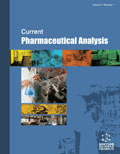
Current Pharmaceutical Analysis
Empowering Researchers with Cutting-Edge InsightsCurrent Pharmaceutical Analysis, published by Bentham Science Publishers Ltd, is a vital resource for professionals and researchers in the fields of Pharmaceutical Science, Biochemistry, and Molecular Medicine. Established in 2006, this peer-reviewed journal aims to provide a platform for the latest advancements and analytical methodologies in pharmaceutical research and drug development. Over the years, it has garnered attention for its rigorous scrutiny and contributions to the landscape of pharmacology, evidenced by its quartile placements in various categories, most notably Q3 in Pharmaceutical Science. Despite its current rankings placing it in the lower quartile in several disciplines, the journal remains an essential venue for both emerging and established researchers seeking to disseminate their findings. With the widespread accessibility of its articles, researchers, professionals, and students can engage with cutting-edge studies to foster innovation in pharmaceutical analysis. For access to the latest research contributions, readers can explore the digital archive and stay updated on pivotal discussions shaping the future of the pharmaceutical sciences.